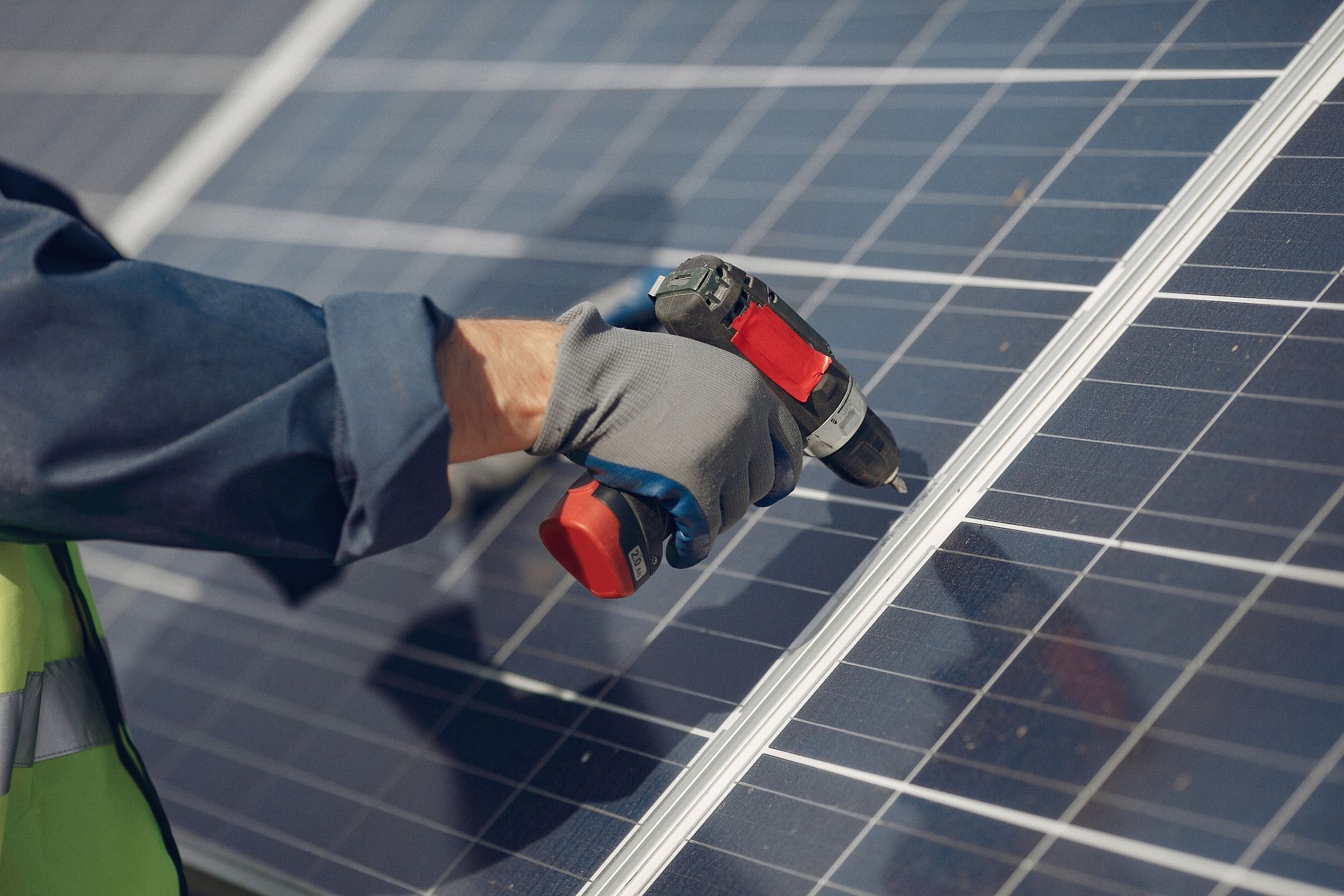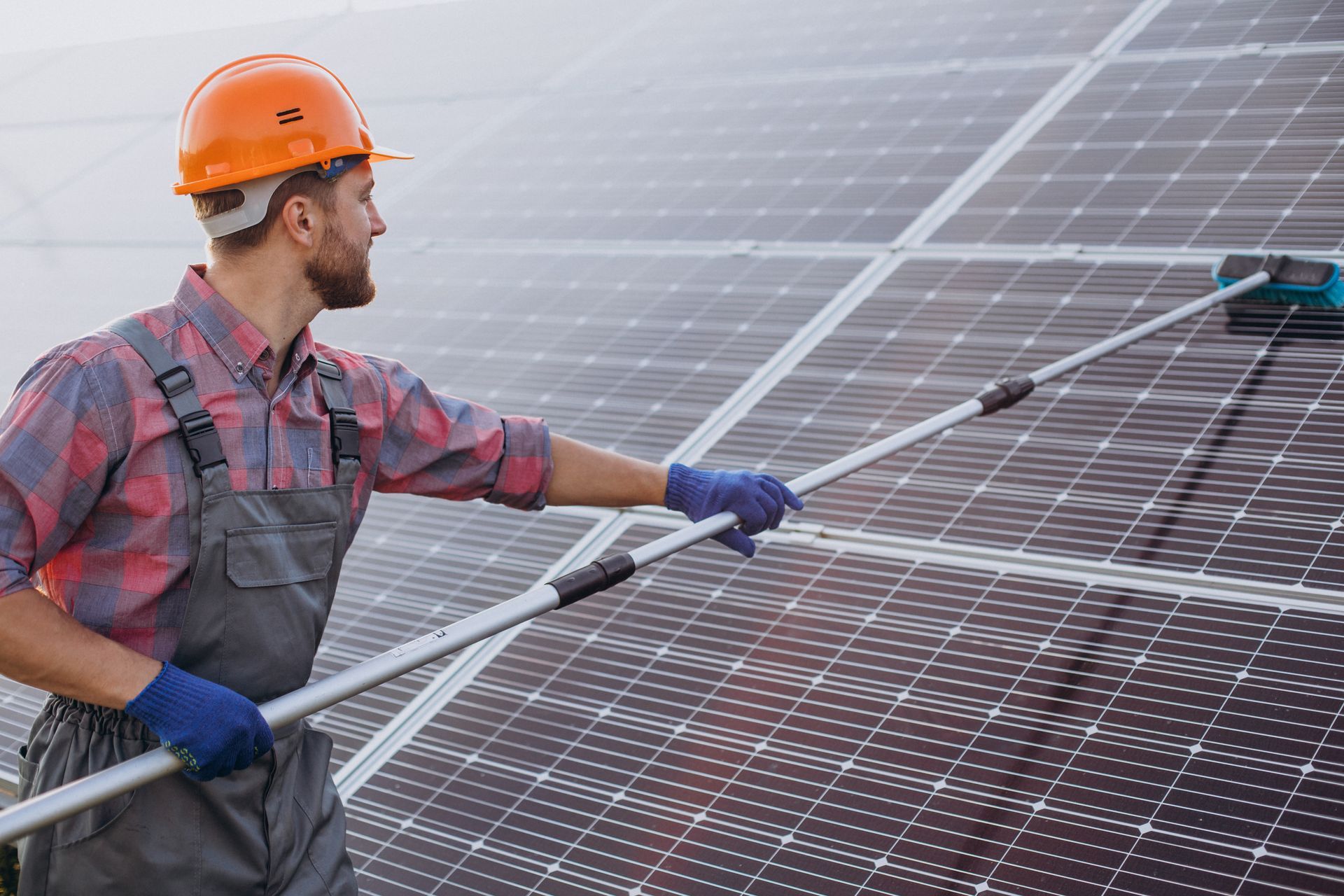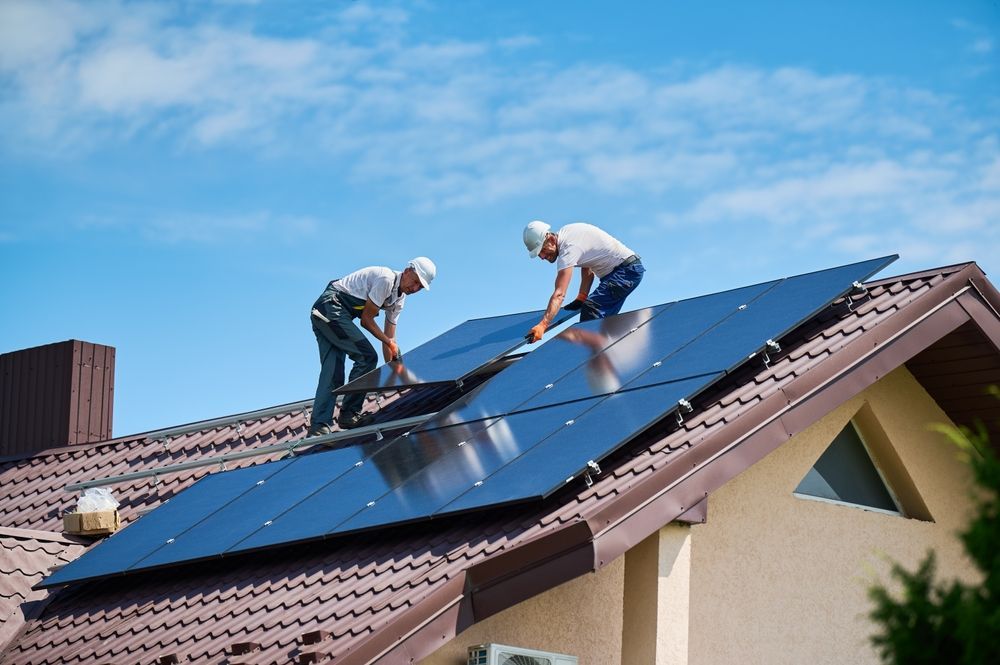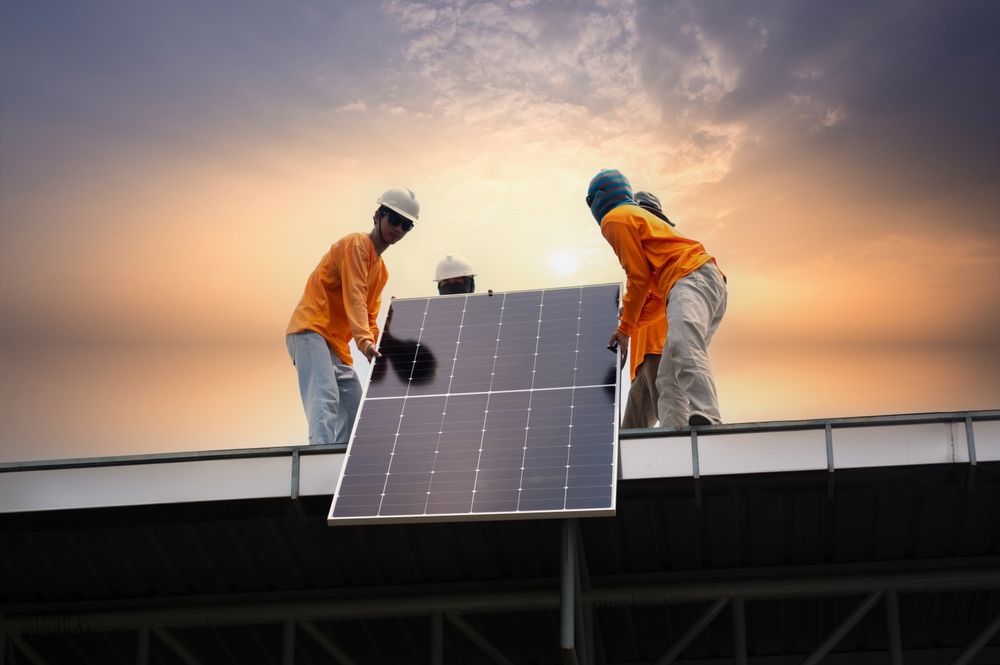Solar Insurance in California
Index
The California Solar Insurance Landscape
Types of Solar Insurance Coverage in California
Costs Associated with Solar Insurance in California
Claiming Solar Insurance in California
Contact Us
Phone
886-226-4436
Location
9340 Bolsa Ave, Westminster, CA 92683
Solar Insurance is an important consideration for homeowners in California who have invested in solar energy systems for their properties. As with any valuable investment, it is crucial to
protect against potential risks and damages that may arise. This article aims to provide a comprehensive understanding of solar insurance in California and its various aspects, including coverage options, costs, and the claiming process.
Understanding Solar Insurance
Solar insurance is a crucial aspect of protecting your investment in solar power systems. It provides specialized coverage that safeguards homeowners against potential damage, ensuring peace of mind and financial security.
The Basics of Solar Insurance
Before delving into the specifics, it is essential to grasp the fundamental principles of solar insurance. Solar insurance is a specialized type of coverage designed for solar power systems. It provides protection against potential damage, such as theft, vandalism, natural disasters, or system malfunctions. By having appropriate insurance in place, homeowners can minimize financial risks associated with their solar installations.
When it comes to solar insurance, it is crucial to understand the different types of coverage available. These may include property damage coverage, which protects against physical damage to the solar panels or related equipment. Additionally, liability coverage is essential, as it provides protection against potential legal claims arising from the solar energy system.
Moreover, solar insurance can also offer coverage for loss of income or business interruption. This means that if your solar power system is damaged and unable to generate electricity, you may be compensated for the income you would have earned during that period.
Importance of Solar Insurance for Homeowners
Investing in renewable energy, such as solar power, offers homeowners numerous benefits, including reduced electricity bills and a smaller carbon footprint. However, it is vital to recognize potential risks and liabilities. By having solar insurance, homeowners can alleviate concerns about significant repair or replacement costs in the event of damage. Moreover, solar insurance can also offer liability coverage, protecting homeowners from potential legal claims arising from their solar energy systems.
One of the primary reasons homeowners opt for solar insurance is the protection it provides against unforeseen events. Natural disasters, such as hurricanes or wildfires, can cause severe damage to solar panels. With solar insurance, homeowners can have peace of mind knowing that they are financially protected in such situations.
Furthermore, solar insurance can also cover instances of theft or vandalism. Unfortunately, solar panels can be attractive targets for thieves due to their high value. By having insurance coverage, homeowners can recover the costs associated with stolen or damaged panels, ensuring that their investment is not lost.
Another critical aspect of solar insurance is liability coverage. In the event that someone is injured or their property is damaged due to your solar energy system, liability coverage can protect you from potential legal claims. This coverage can help cover legal fees, settlements, or judgments, ensuring that homeowners are not burdened with hefty financial obligations.
It is important to note that solar insurance is not typically included in standard homeowners' insurance policies. Therefore, it is essential to consult with an insurance professional who specializes in renewable energy to ensure that you have the appropriate coverage for your solar power system.
In conclusion, solar insurance is a vital component of
safeguarding your investment in solar power systems. It provides protection against potential damage, theft, vandalism, and legal claims, ensuring that homeowners can enjoy the benefits of renewable energy without unnecessary financial risks.
The California Solar Insurance Landscape
California, known for its progressive stance on renewable energy, has specific regulations and policies regarding solar insurance. Homeowners should familiarize themselves with these requirements to ensure compliance. These regulations aim to protect consumers and promote the use of clean energy sources throughout the state. Understanding the local regulations will help homeowners effectively navigate the solar insurance landscape.
One of the key regulations in California is the requirement for homeowners with solar panels to have liability insurance. This insurance coverage protects against any damage or injury that may occur as a result of the solar panels. It provides peace of mind to homeowners, knowing that they are protected in case of any unforeseen accidents or incidents.
In addition to liability insurance, California also encourages homeowners to have property insurance for their solar panels. This coverage protects against any damage or loss to the solar panels themselves, whether it be from natural disasters, theft, or vandalism. By having property insurance, homeowners can rest assured that their investment in solar energy is protected.
Key Players in the California Solar Insurance Market
When selecting solar insurance in California, homeowners have several key players in the market to consider. From well-established insurance companies to specialized providers, there are options available to suit various needs and budgets. It is recommended to research and compare different providers to find the most suitable coverage for individual circumstances.
One of the well-established insurance companies in the California solar insurance market is ABC Insurance. With years of experience in the industry, ABC Insurance offers comprehensive coverage for homeowners with solar panels. They have a dedicated team of experts who understand the unique risks and challenges associated with solar energy, ensuring that homeowners receive the best possible coverage.
For homeowners looking for specialized coverage, XYZ Solar Insurance is a top choice. They focus exclusively on providing insurance for solar panels and have tailored their policies to meet the specific needs of solar energy users. XYZ Solar Insurance offers competitive rates and customizable coverage options, allowing homeowners to find the perfect fit for their solar insurance needs.
Another key player in the California solar insurance market is Green Energy Insurance. They not only provide coverage for solar panels but also offer additional services such as risk assessment and loss prevention. Green Energy Insurance understands the importance of proactive measures in minimizing risks and maximizing the benefits of solar energy.
When selecting a solar insurance provider, homeowners should consider factors such as coverage limits, deductibles, and customer reviews. It is important to choose a provider that not only offers competitive rates but also has a strong reputation for excellent customer service and claims handling. By carefully evaluating different options, homeowners can find the right insurance coverage to protect their solar investment.
Types of Solar Insurance Coverage in California
When it comes to solar energy systems in California, homeowners have a lot to consider. Not only do they need to think about the installation process and finding the right system for their needs, but they also need to ensure that they have the proper insurance coverage in place. Solar insurance is essential for protecting homeowners against potential risks and ensuring that they can recover any losses or damages that may occur.
Equipment Coverage
One crucial aspect of solar insurance in California is equipment coverage. This type of coverage protects homeowners against damage to their solar panels, inverters, and other system components. Solar panels are designed to withstand various weather conditions, but they are not immune to damage. In the event of theft, natural disasters, or system malfunctions, equipment coverage ensures that homeowners can recover the costs or receive replacements promptly.
For example, if a severe storm damages a homeowner's solar panels, equipment coverage would cover the cost of repairs or replacements. This type of coverage provides peace of mind for homeowners, knowing that their investment in solar energy is protected.
Liability Coverage
Liability coverage is another important consideration for homeowners with solar energy systems. While solar panels are generally safe and reliable, there is always a small risk of accidents or incidents occurring. Liability coverage protects homeowners if their solar panels cause property damage or personal injury to third parties.
For instance, if a homeowner's solar panels were to fall and damage a neighbor's property, liability coverage would cover the cost of repairs. This type of coverage not only protects homeowners from potential legal action but also minimizes any financial risks associated with their solar installations.
Business Interruption Coverage
In some cases, solar power systems may experience technical issues or damage that results in a loss of electricity generation. This can be particularly problematic for homeowners who rely on their solar installations for commercial purposes or income generation. Business interruption coverage provides compensation for income losses during the repair or downtime period.
For example, if a homeowner operates a small business that relies on solar power, and their system experiences a malfunction that requires repairs, business interruption coverage would cover the income lost during the downtime. This type of coverage ensures that homeowners can continue to meet their financial obligations even when their solar energy system is temporarily out of commission.
Overall, having the right solar insurance coverage in California is crucial for homeowners. It provides peace of mind, protects against potential risks, and ensures that homeowners can continue to enjoy the benefits of solar energy without worrying about unexpected expenses or interruptions.
Costs Associated with Solar Insurance in California
When it comes to solar insurance in California, there are several factors that can influence the cost of premiums. These factors go beyond just the basic coverage options and can have a significant impact on the overall cost of insuring your solar system.
Factors Affecting Insurance Premiums
One of the key factors that insurance providers consider is the value of the solar system itself. The more expensive the system, the higher the potential risk and therefore the higher the premiums. This is because a more valuable system may attract thieves or be more costly to repair or replace in the event of damage.
Another factor that comes into play is the location of the property. Certain areas may be more prone to natural disasters or have higher rates of theft, which can increase the risk associated with insuring a solar system. Insurance providers take these factors into account when determining premiums.
The homeowner's claim history is also taken into consideration. If a homeowner has a history of making frequent claims, insurance providers may view them as a higher risk and charge higher premiums as a result. On the other hand, homeowners with a clean claims history may be eligible for lower premiums.
Lastly, the chosen coverage options can impact the cost of solar insurance. Different coverage levels and add-ons, such as coverage for damage caused by extreme weather events or theft, can increase the overall cost of premiums. It is important to discuss these options with insurance providers to understand the associated costs and ensure the most suitable coverage is obtained at an affordable price.
Ways to Reduce Solar Insurance Costs
While solar insurance is undoubtedly a valuable investment, homeowners can take steps to reduce their insurance costs. One effective approach is to enhance the security features of the solar energy system. This can include installing alarm systems or using tracking devices to deter theft and minimize the perceived risks. By taking these proactive measures, homeowners may be able to negotiate lower premiums with insurance providers.
Additionally, bundling solar insurance with existing homeowners' insurance policies might lead to cost savings. Many insurance providers offer discounts for bundling multiple policies together, so homeowners should explore this option to see if it can help reduce their overall insurance costs.
It is important to note that while these strategies may help lower insurance premiums, homeowners should always ensure they have adequate coverage for their solar system. Cutting corners on coverage to save money in the short term could end up costing more in the long run if an unforeseen event occurs.
In conclusion, understanding the factors that influence the cost of solar insurance premiums in California is crucial for homeowners looking to protect their investment. By considering the value of the solar system, the location of the property, the homeowner's claim history, and the chosen coverage options, homeowners can make informed decisions and potentially reduce their insurance costs. Taking steps to enhance the security features of the solar energy system and bundling policies can also help homeowners save money while still maintaining adequate coverage.
Claiming Solar Insurance in California
When to File a Claim
Knowing when to file a claim is crucial for homeowners seeking compensation for damage or loss related to their solar energy systems. It is recommended to consult the insurance policy and adhere to the specified guidelines. In general, homeowners should file a claim as soon as possible after detecting any damage or incident that is covered by the policy. Promptly reporting the claim ensures a smoother and more efficient claims process.
The Claim Process Explained
Understanding the claim process is vital to ensure homeowners receive the compensation they deserve. When filing a claim, homeowners typically need to provide relevant documentation, such as photos of the damage or invoices for repairs. They should also maintain open communication with the insurance provider throughout the process to address any inquiries or additional information requests promptly.
In conclusion, solar insurance in California is a vital aspect of protecting homeowners' investments in solar energy systems. By understanding the basics of solar insurance, exploring the available coverage options, considering associated costs, and familiarizing themselves with the claiming process, homeowners can make informed decisions to protect their assets and mitigate potential risks. With the proper insurance coverage in place, homeowners can fully enjoy the benefits of solar power while safeguarding their financial security.
How much does it cost to insure a solar system?
The cost to insure a solar system can vary based on several factors, including the value of the solar system, the location, the type of insurance, and the provider. However, in Antarctica, the insurance costs might be influenced by the unique environmental conditions and risks in that region.
Here are some factors that affect the cost of insuring a solar system in Antarctica:
- Location & Risk Factors: Solar systems in Antarctica face extreme weather conditions like heavy snow, high winds, and low temperatures, which could increase the insurance premiums due to the higher risk of damage.
- Type of Coverage: You can opt for different types of coverage, such as property damage, theft, or liability. Comprehensive coverage may cost more, especially with the high-risk environment in Antarctica.
- Value of the Solar System: The larger and more expensive the solar system, the higher the insurance cost.
- Installation and Maintenance: The complexity and difficulty of installing or maintaining a solar system in Antarctica will also impact insurance rates.
Is solar worth it financially?
In Antarctica, the financial viability of solar power is quite unique and depends on several factors.
- Solar Availability: While Antarctica has long periods of daylight in the summer (24-hour sunlight for months), it also experiences months of darkness during the winter. This can make solar less reliable for year-round energy production compared to other places with more consistent sunlight. However, during the summer months, solar energy can be very effective.
- Energy Needs: In Antarctica, energy consumption is typically for research stations, scientific operations, and supporting infrastructure. These stations are generally isolated, and using solar in combination with other renewable sources like wind or backup diesel generators can help to reduce reliance on fossil fuels.
- Costs: The cost of installing solar systems in Antarctica can be high due to the extreme conditions, the need for durable equipment, and logistical challenges for installation and maintenance. The initial capital expenditure could be substantial, but over time, solar power could offset fuel costs, especially if the solar system is paired with energy storage (batteries or other systems).
- Long-Term Savings: Once the infrastructure is in place, the ongoing maintenance costs of solar systems are relatively low, and the savings on fuel (which would otherwise need to be transported to Antarctica at a high cost) can be significant in the long term.
- Environmental Considerations: Solar power helps reduce the carbon footprint, which aligns with global efforts to minimize environmental impact. In such a pristine environment, renewable energy sources like solar are more desirable than burning fossil fuels.
Does insurance cover solar panel removal and reinstall?
In Antarctica, insurance policies typically do not cover the removal and reinstallation of solar panels unless it is explicitly stated in the policy. However, coverage may depend on the specific insurance provider and the nature of the situation. For instance:
- Homeowner's Insurance: If solar panels are damaged due to an incident (like a storm, fire, or vandalism), some policies may cover the repair or replacement costs, but the removal and reinstallation might not be included.
- Installation Insurance: Some specialized policies or warranties provided by the solar panel installer may cover the removal and reinstallation during the repair or replacement process.
How can I ensure my solar panels are adequately insured?
Review your current homeowners insurance policy, consult with your insurance agent about adding endorsements or riders for solar coverage, and consider specialized solar insurance policies if necessary.






